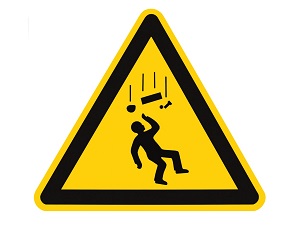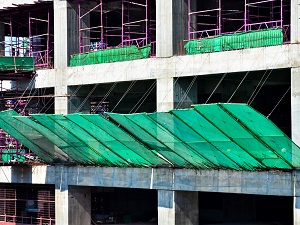Falling objects, like tools, materials, or debris, can expose workers to minor injuries like cuts and abrasions, but can also cause more serious injuries like puncture wounds or concussions. In some cases, especially if workers are not wearing hard hats, a dropped object can result in hospitalization or even a fatal injury.

OSHA Standards very specifically state that workers must have protection from falling objects. OSHA Construction Standard 1926.501(c) and OSHA General Industry Standard 1910.29(c) both state that when workers are exposed to falling object hazards, they must wear head protection and at least one of the following safety measures must be implemented:
- Put up toeboards, screens, or a guardrail system to prevent falling objects.
- Build a canopy structure to prevent falling objects.
- Barricade the area below where objects could fall.
Consider adding a safety meeting covering the topic of falling object hazards. Use the key points in this article to as a starting point to spark a discussion on the falling object hazards at your work site. Review current safety measures in place and consider additional precautions that will “stop the drop” and prevent future falling object injuries.

There are many different safety precautions that can be implemented that may help prevent falling object hazards at the work site. After a hazard evaluation, consider these safety measures.
Workers should always wear hard hats when work is being performed overhead, or there is any risk of falling objects in the area.
Ensure toeboards are in place; inspect frequently. Use boards or guardrails on scaffolds to prevent objects from falling. Use debris nets or catch platforms for falling object protection.
Secure all tools and materials to prevent them from falling on people below. Do not hang or drape any items over guardrails. Unless items are being used for work in progress, keep all tools and materials at least 3 feet from any leading edges. Consider using tool lanyards to prevent tools from falling.
Whenever possible, avoid working under other workers at heights. Avoid working under moving loads. Put up barricades and post warning signs at work zones that may have falling object hazards.
Stack materials securely to prevent them from sliding, falling, or collapsing.
When working at heights do not keep any items in pockets that aren’t zipped or securely closed, including items like cell phones, pens, or small tools.

.jpg)

